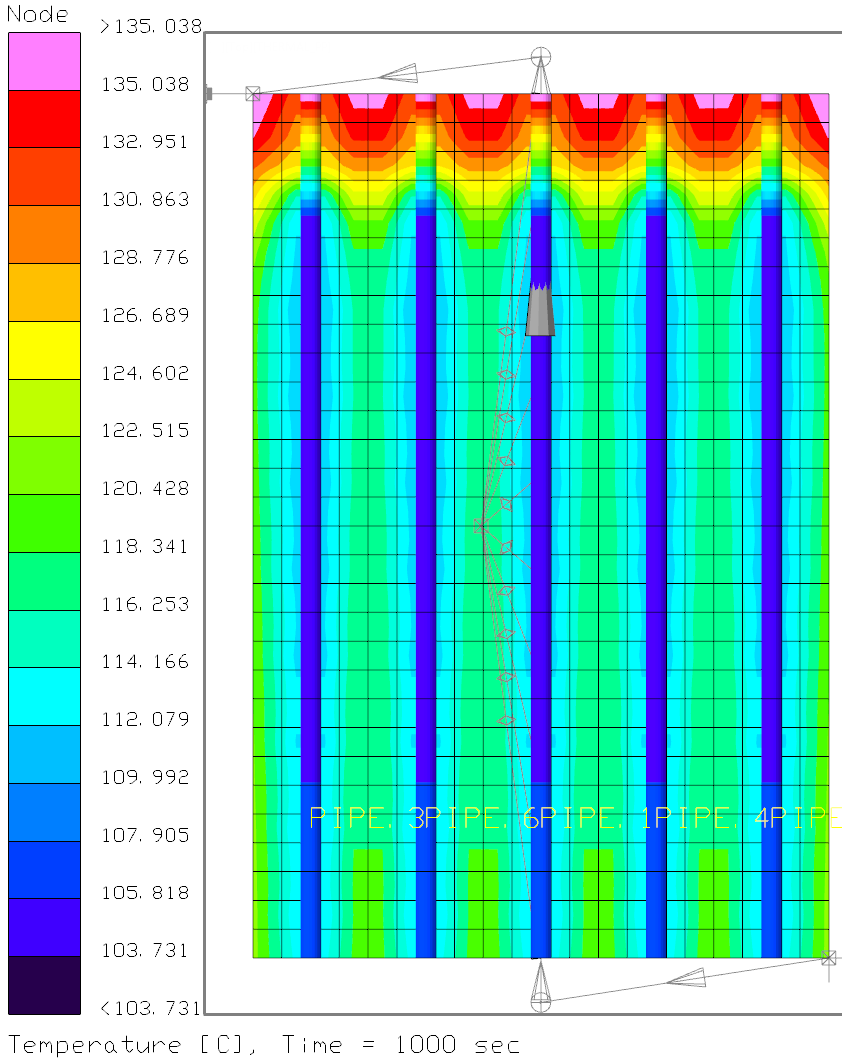Thermosiphons and Loop Thermosiphons
Single phase and two phase loop thermosiphons (LTS) are used across multiple industries such as solar thermal hot water heating, electronics cooling, gas-fired heaters, and nuclear reactor cooling, and cryogenic magnet cooling. Since the operation of thermosiphons and loop thermosiphons is based on the natural circulation due to changes in fluid density in a gravity environment (buoyancy), the modeling of such systems can be challenging, especially in the presence of two-phase evaporation and condensation. With two-phase thermosiphons not only are density and gravity a factor, but you must also capture pool boiling and the falling water droplets as the fluid condenses.
A simple thermosiphon is a vertical pipe where liquid pools at the bottom and when heated, vapor rises in the middle of the pipe while liquid condenses near the top and fall down along the pipe walls. A higher-performing design is a loop thermosiphon (LTS), which separates the down-flowing liquid from up-flowing vapor (or two-phase) streams. Subcooling and superheating can occur more readily in such a loop. In some designs, liquid flows downward and two-phase fluid flows upward. In others, a two-phase mixture flows downward and vapor flows upward. As long as one line has a higher time-averaged density than the other, circulation will occur. An LTS self-determines both the pressure and the flow rate, and the flow rate is often unstable: intense, short time-scale oscillations and even temporary flow reversals are common.
Fortunately SINDA/FLUINT and FloCAD® provide the necessary tools required to capture all of these phenomena for both steady state and transient simulations. There are multiple approaches to modeling a thermosiphon depending on the design of the system and what data you need from the analysis.
To aid in demonstrating these options, CRTech has created the following sample models:
Unique features relevant for analyzing LTSs
- Complete thermodynamics: phases appear and disappear as conditions warrant
- Two-phase heat transfer correlations built-in or user-defined
- Two-phase pressure drop correlations built-in or user-defined
- Automatic flow regime mapping
- Homogeneous and slip flow modeling, including countercurrent flow in the presence of gravity and other accelerations
- Conservation of total charge mass for accurate pressure predictions in transients or parametric studies
- Complex liquid/gas mixtures including optional dissolution of any gaseous solute into liquids
- Fast and easy geometric model generation of condensers (serpentine, manifolded, etc.), including bonding or contact to thermal surfaces and solids, using FloCAD
